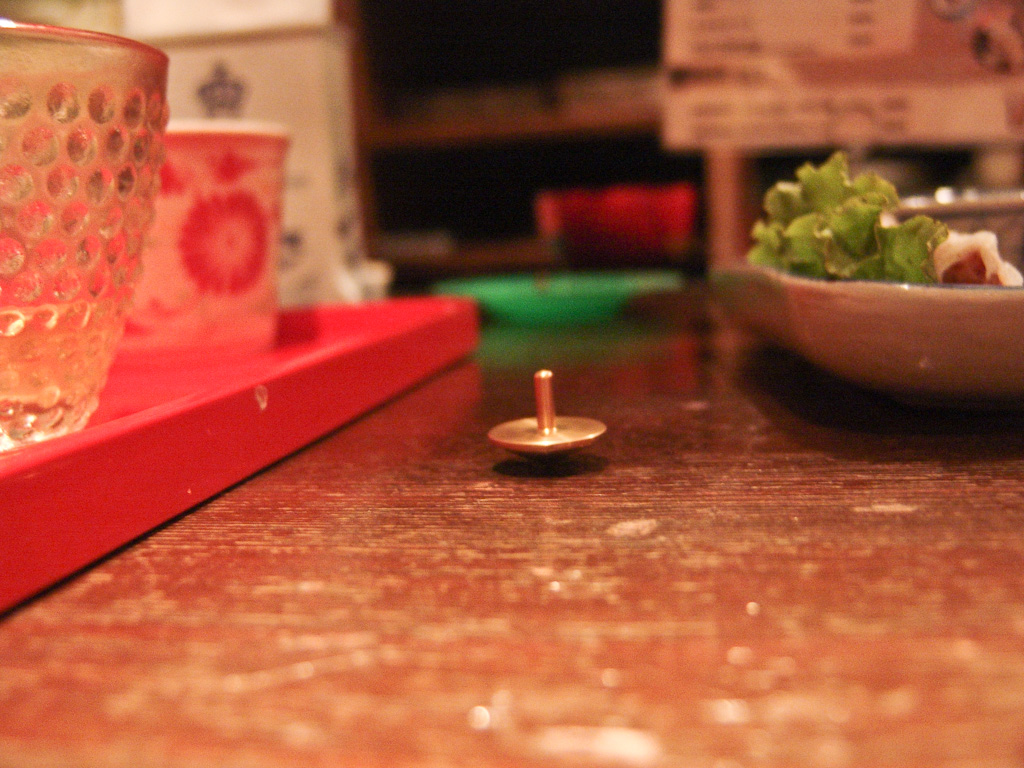Spent yesterday with a colleague refining the goals of our next user study and discussing where we should focus our research energies next year. Talking through what to research is one of the more pleasurable aspects of this job – there’s typically some scope to decide where to conduct user studies, you don’t need to lug 26kg of equipment through rush-hour Tokyo to get there, assistants always turn up on time, the printer always works, you don’t every run out of quarters for the launderette, and the deadlines have yet to be set.
At some point in the day we cycled over to Shimo Kitazawa to be surrounded by people and to reflect on whether what we had planned was feasible. There can be a jarring moment in user studies where you realise you were well off the mark ‘of course people are going to react in that way when you do xyz!?’ and being surrounded by people going about their business is a good reality check before even running a pilot study. At some point in our wander through the neighbourhood we ended up in a Vietnamese restaurant, and seated on the counter watching the chef prepare the food and continued our discussion. In front of us, on the counter was a bowl of small, brass spinning tops for sale. I picked one up and spun it on the flat wooden counter.
This spinning top had two properties that made it special. Being pure brass with no decoration and perfect symmetry it looked identical when it was spinning compared to when it was stationary. In addition it was so finely balanced and the table surface so condusive to spinning that it seemingly spun for minutes. The only time you could tell it was moving was at the beginning of the spin cycle – when it slowly orbited an imaginary planet before settling in one place, and at the very end when it lost its momentum and spun out. After being spun it quickly became a background activity, since it required no further interaction and other tasks like tucking into the food and continuing conversations took over.
There was a moment when our attention returned to the top which because it was so long since it was last spun appears totally stationary seemingly balanced upright on its tip and somehow defying gravity. There were no cues to it spinning, and the affect was simply indistinguishable from magic. Do magicians have a word or phrase to describe the affect of tricking human perception? (not closure, but something similar?)
A lot of the time we think about designing to and within human limitations – think usability, think ergonomics. There’s a world out there that is beyond human perception (and to extrapolate this, there is a world out there that is beyond the perception of the tools we can perceivable design). Increasingly however the objects we carry are able to extend our human capabilities: cameras can record more accurately or, shown in the example below – can record differently to (my) falable human memory; mobile phones enable you to shout further; text messaging is nothing less than shifting time and space.
What human capabilities will be extended or dampened by what tools
